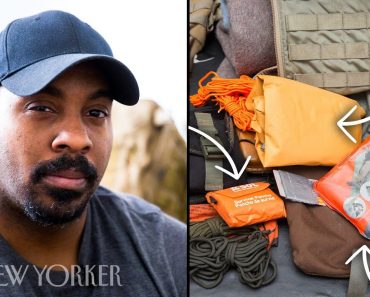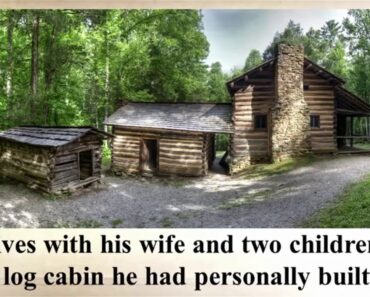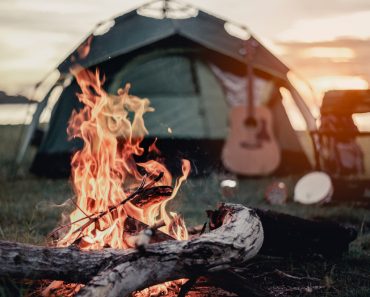The cinematic release of Frank Herbert’s science-fiction novel “Dune“ hit the theatres recently, promising an action-filled movie with stunning graphics. It didn’t disappoint. But amid all the big-screen spectacle, few people noticed that a large portion of the film was about survival.
Granted, there was a short war in the movie when the Harkonnens returned to Arrakis to destroy House Atreides, their historic enemies. It’s that attack that sets up the survival scenario, as Paul and his mother Jessica escape. Thrust into the most severe survival situation one can imagine, they have to survive and find the Fremen before dying. Surprisingly, the movie gives some real insight into what was needed to survive in that environment.
Part of what makes this such a good survival story is the environment they find themselves in. Arrakis is a desert planet in the truest sense of the word, covered in dunes with occasional rock outcroppings. What water does exist outside of the polar areas is trapped beneath the sand by the sandtrout. Population centers are limited to a small area around the North Pole, except for the Fremen, who have learned to live in the desert. Temperatures typically hit about 104°F during the day, forcing people to stay indoors. Any work that needs to be done outdoors is done at night.
On top of that, there are worms to contend with. While every planet has its predators, there aren’t too many predators big enough to swallow entire vehicles whole, and large vehicles at that. Surviving the desert on Arrakis doesn’t just mean surviving the environment. It means not attracting a sandworm and having it consume you whole.

Yet Paul and Jessica manage to do so, mainly because of a Fremkit survival kit and still suits given to them by Liet-Kynes, the imperial planetologist. While everything they used was imaginary, that technology, if it existed, would be amazing. But then, it would do most of us no good whatsoever, as it wasn’t developed for the environments that we would find ourselves in.
While a work of fiction, I think there are some valuable lessons that we can extrapolate from this movie and the book that it was taken from. Lets’ look at a few.
Survival is Always Specific to the Situation
It’s easy to try and generalize survival, working on designing a bug out plan or bag that works for all situations. But the reality is that what works in one case may very well not work in another. My first survival lessons were in the Rocky Mountains, where we had forests and running water all around us. Many of the lessons I learned there do me little good in the arid terrain where I live now and would do no good whatsoever in the desert on Arrakis.
Paul and Jessica had to use concrete survival strategies to survive on Arrakis. Part of that was to travel at night and hide out during the daytime. Temperatures during the day were too hot for travel, as is found in many deserts here on Earth. The lack of water was a constant concern, even to the point where some Fremen wanted to kill them because of the water their bodies contained.
Much of the equipment found in the Fremkit was explicitly designed for the environment they were in. Their tent captured the moisture from their breath, condensing it back to water so that they could drink it. I don’t know if anyone is working on an actual design now, but it seems that it should be possible with the technology we have available to us. That’s not all that tent did, though. It was designed in such a way to make it possible for it to hold up the weight of the sand that blew over it in the sandstorm.
If your survival gear isn’t made to fit the environment that you’re going to be in, then it’s the wrong gear, no matter how many raving reviews it got. Those reviews are fine for getting an idea of what is well-made and what isn’t, but that’s about as far as it goes. You have to decide for yourself what you’re going to need for the situation you’re likely to find yourself in.
Use the Environment to Your Advantage
We tend to look at the environment as our enemy in any survival situation. After all, it’s that environment that is trying to kill us. But in Dune, there are two distinct ways that Paul uses the proclivities of the environment to his advantage; not only in helping him escape but in cutting off those who were following them to kill them.
The first of these was when they flew into the dust storm, following the advice of Liet-Kynes. According to her, if they could reach an altitude of 5,000 meters, it would be mostly dust and, therefore, safe for their ornithopter. Shortly after that, we see Glossu Rabban (Dave Bautista’s character) reporting to his uncle, the Baron Harkonnen, that they had flown into the sandstorm, with winds at 800 kph, therefore must be dead.
Once their ornithopter went down, they had to get away from it and move into the rocky outcroppings found in the desert. It’s not mentioned in the movie, but in the book Paul says something about a worm coming to eat the ornithopter, hiding it from anyone who might search for them. If I remember correctly, he even sets a thumper to draw a worm for that purpose.
I don’t care what the situation is; some things can be turned to your advantage. The snow might make travel more difficult, but it can also provide shelter. A wide river might make travel difficult or easy, depending on whether one has a boat that they can use. At a minimum, it can provide water.
Take the Time to Learn
In the early part of the movie, there’s a scene where Paul is studying up about their new home on Arrakis. It appears to be something he had decided to do independently, rather than being told to do so. That would make sense, as he had been trained in fighting and other skills to ensure his survival. Later we see him using the very same information that he was studying.
Regardless of the specific scenario, knowledge is a vital part of survival. The more we know, the more we can apply in any survival situation we find ourselves in. That doesn’t mean that everything we learn will be helpful in all cases; but the more we know, the more likely we will know something useful.
I’ve been studying survival for over 40 years now, and I’m still learning. It seems the more that I learn, the more I find that I don’t know. Ignorance might be bliss, but I sure don’t want to have that sort of bliss the next time I find myself in a survival situation.
Equip Yourself Specific to Your Needs
The Fremkit that Paul and Jessica found in the ornithopter was genuinely amazing, filled with very specialized survival gear, tailored to the desert of Arrakis. It was also clearly high-quality gear. That’s important; we can’t expect to run to our favorite store to get another one if our equipment breaks down.
Before the attack, when Paul and his father go out to see a harvester working to harvest the spice, Liet-Kynes inspects their stillsuits. As she is doing so, she mentions that the Fremen made the suits they were wearing and that those were the best stillsuits to be found. It makes sense that the best survival gear would come from those who depended on that equipment to survive. Even if they weren’t the best engineers, they would understand what was needed.
Part of making sure that you have the best possible gear is making sure that it is seasonally appropriate. This may mean going through your bug-out bag a couple of times per year, replacing things like clothing, sleeping bags, and tents with appropriate ones for the summer and winter, depending on where you live and where your survival situation might take place. This might also be true if you travel to another climate, where you face different challenges.
Stick Close to Critical Resources
Both the city dwellers and the Fremen know that the most critical resource for their survival is water. The few cities found on the plant of Arrakis are all located near the northern pole, where there is still water. On the other hand, the Fremen, who live in the desert, keep their water in underground lakes carved out of the desert stone.
When the Fremen travel, it is from water source to water source. Some of those are co-located with their seiches, but others are ecological stations established in their efforts to terraform their world. In this, they are similar to the cowboys in the Old West, traveling from water hole to water hole as they moved around the country and especially as they brought trail herds to market.
Regardless of the survival situation, resources play an essential part in our ability to survive. Staying close to those resources is vital, both in the sense of making sure we have what we need and in conserving energy rather than expensing it constantly searching out new sources of those items required.
At the same time, we must recognize that we are not the only ones who need those resources, especially water. Don’t camp out right by the water, but rather far enough away from the water that you aren’t keeping animals from getting to it as well.
Look for the Right Associates
Once Paul and Jessica survive the sandstorm and get away from their crashed ornithopter, Paul starts seeking out the Fremen. There can be several reasons for this, including that his friend and mentor Duncan Idaho had already made contact with them, bringing Stilgar to meet his father. They had talked about developing “desert power” and how the Fremen were a vital part of that. But at least one of the reasons they sought out the Fremen was that they were the experts in surviving the desert. If they were going to stay, they recognized that they needed that expertise.
The subject of building a survival team has been discussed thoroughly in the survival community, including by myself. I would remind you that you’re not just looking for a list of skills, but people who can genuinely help you survive. If they can’t help you do that, then they are dragging you down, perhaps to the point of death.
Teamwork is essential in just about every area of human activity, but it is in survival that true collaboration reaches its pinnacle. A properly functioning team consists of specialists, all of whom are experts in at least one crucial area and conversant in others. But what makes that group into a team is their commitment to each other, working together, side by side, for the mutual benefit of all. Anyone who is not committed to the team is not of use to that team, and anyone who is not of benefit to the team is nothing more than a burden.
The Fremen of Stilgar’s siech understood this. When they were discussing whether to kill Paul and Jessica or bring them into the fold, it was mentioned that Paul was still young enough to teach, while his mother wasn’t. It wasn’t until she proved herself that they were willing to consider taking her along as well.
Adequate Shelter is Critical
The shelter is one of our most critical survival priorities, and it is in the movie as well. Whether that shelter is the tent that Paul and Jessica stay in the desert, the seiches of the Fremen or the city’s enclosed and sealed buildings, shelter is critical to their survival. There’s even a public address announcement in the city, telling people to get indoors before the temperature rises too high for them to survive.
With shelter being such a high survival priority, I’ve always found it curious how few preppers have tents of any sort in their bug-out bag. Typically all we have is a tarp, and if we do have a tent, it’s one of those tube tents made out of the same material used in survival blankets. Most of us expect to make a shelter out of whatever materials we can find. But if backpackers can carry ultralight tents in their packs, why can’t we do so as well?
Where I live, there’s a lot of countries where the ability to build a shelter out of available materials is limited. When the tallest thing around is a brush, it gives you a lot to work with. It’s still possible to build a shelter out of a tarp, but finding a tree limb that can serve as a ridge pole is all but impossible.
This shelter issue was critical on Arrakis because of the heat, but it is more necessary for us in the wintertime when we have to worry about losing our body heat. Yet many talk about making a debris hut or other shelter out of whatever nature provides. The debris hut is suitable for providing some insulation, but it can’t withstand the wind. Other shelters might keep from being blown apart by the wind but can’t control the wind from going through the shelter, robbing any heat you might generate.
Take a fresh look at the shelter that you’re planning on using, asking yourself if it will be adequate in adverse weather. If you think it is good enough, try it out in those conditions to see if it will work. If not, it’s time to rethink that part of your survival strategy.



























